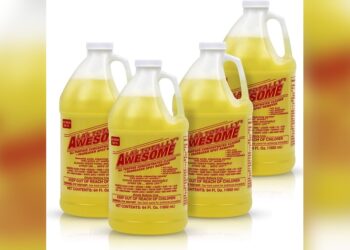Coolant bubbling in the reservoir can be a worrying sight. It often signals a problem in your vehicle’s cooling system.
Understanding why this happens is crucial for preventing engine damage. Coolant bubbling could be due to various issues, from a simple air pocket to a more serious head gasket failure. Ignoring this issue can lead to overheating, which might cause significant engine damage.
In this blog post, we will explore common causes of coolant bubbling, what it means for your car, and how to address it. By the end, you’ll know whether you can fix the problem yourself or if you need professional help. Stay tuned to keep your car running smoothly and avoid costly repairs.

Credit: www.youtube.com
Common Causes Of Coolant Bubbling
Coolant bubbling in the reservoir can indicate various underlying issues. Identifying the common causes is crucial. This helps in resolving the problem effectively. Let’s explore the main culprits behind coolant bubbling.
Overheating Engine
An overheating engine is a primary cause of coolant bubbling. When the engine gets too hot, it can cause the coolant to boil. This boiling creates bubbles in the reservoir. Regularly check the engine’s temperature gauge to prevent overheating.
Faulty Radiator Cap
A faulty radiator cap can also lead to coolant bubbling. The cap maintains proper pressure in the cooling system. If it fails, the pressure can drop. This drop allows coolant to boil at a lower temperature. Always ensure the radiator cap is in good condition.
Blown Head Gasket
A blown head gasket is a serious issue. It allows gases from the engine to enter the cooling system. These gases create bubbles in the coolant. This is often accompanied by white smoke from the exhaust. Immediate repair is necessary to avoid severe engine damage.
Air Pockets In Cooling System
Air pockets can form in the cooling system during repairs or coolant replacement. These pockets can cause bubbling in the reservoir. They disrupt the normal flow of coolant. Bleeding the cooling system can help remove these air pockets.

Credit: www.reddit.com
How To Identify The Problem
Identifying coolant bubbling in the reservoir early can prevent serious engine damage. Knowing what signs to look for can help you take action before it’s too late. Here are some key indicators to watch for.
Visual Inspection
Look at the coolant reservoir. If you see bubbles, it’s a clear sign. The liquid may also appear frothy or foamy. Check for any visible leaks around the engine. Leaks can cause coolant to bubble.
Coolant Smell
Smell the air near your engine. A sweet smell indicates a coolant leak. This odor often accompanies bubbling coolant. A burnt smell may signal engine overheating.
Check Engine Light
Keep an eye on your dashboard. The check engine light may illuminate. This light can indicate a coolant issue. Do not ignore this warning. It’s crucial to investigate further.
Temperature Gauge Readings
Monitor your temperature gauge. If it reads higher than normal, take note. This can be a sign of coolant problems. Consistently high readings mean your engine is overheating.
Overheating Engine Solutions
Overheating engines can cause major problems for your car. If you notice your engine overheating, immediate action is crucial. Simple steps can help you address and fix the issue.
Coolant Flush
A coolant flush can help solve overheating issues. Flushing removes old, dirty coolant and any debris. This process ensures clean coolant circulates through your engine. It improves cooling efficiency and prevents overheating.
Inspecting Fans
Cooling fans play a key role in engine temperature control. Check if the fans are working properly. A faulty fan can lead to engine overheating. Ensure the fan turns on when the engine heats up. Replace the fan if it is not functioning.
Checking Thermostat
The thermostat regulates your engine’s temperature. A stuck thermostat can cause overheating. Check if the thermostat opens and closes correctly. Replace it if necessary to ensure proper engine cooling.
Replacing Water Pump
The water pump circulates coolant through your engine. A failing water pump can lead to overheating. Inspect the water pump for leaks or damage. Replace the pump to maintain efficient coolant circulation.

Credit: www.youtube.com
Fixing A Faulty Radiator Cap
A faulty radiator cap can cause your coolant to bubble in the reservoir. The radiator cap is crucial for maintaining the right pressure in your cooling system. If it is not working properly, your engine might overheat. This can lead to serious damage. Below are steps to test the cap, choose the right replacement, and install it correctly.
Testing The Cap
First, you need to test the radiator cap. This can help you confirm if it’s the source of the problem. Use a radiator cap tester for this task. Follow these steps:
- Make sure the engine is cool.
- Remove the radiator cap carefully.
- Attach the cap to the tester.
- Pump the tester to the pressure rating on the cap.
If the cap holds the pressure, it’s fine. If it doesn’t, you need a new one.
Choosing The Right Replacement
Not all radiator caps are the same. You need one that matches your car’s specifications. Look for these details:
- Pressure rating
- Size and fit
- Brand and quality
Check your car’s manual or consult a professional. Getting the right cap is crucial.
Proper Installation
Once you have the right cap, installing it correctly is the next step. Here’s how:
- Ensure the engine is still cool.
- Clean the radiator neck with a cloth.
- Place the new cap on the radiator neck.
- Press down and turn it clockwise until it clicks.
Make sure the cap is secure. A loose cap can still cause issues.
Fixing a faulty radiator cap can stop your coolant from bubbling. It also helps maintain engine health. Follow these steps for a smooth fix.
Addressing A Blown Head Gasket
Coolant bubbling in the reservoir can be a sign of a blown head gasket. This issue needs immediate attention to prevent engine damage.
A blown head gasket can cause coolant to bubble in the reservoir. This is a serious issue for your vehicle. It needs immediate attention. Ignoring it can lead to more costly repairs. Here, we will discuss symptoms, temporary fixes, and professional repair options.Symptoms Of A Blown Gasket
Recognizing the signs early can save you a lot of trouble. Look out for these symptoms:- White smoke from the exhaust
- Milky oil (a mix of oil and coolant)
- Overheating engine
- Loss of coolant without visible leaks
- Poor engine performance
Temporary Seals
Temporary fixes can help you reach a repair shop. These are not permanent solutions. They can hold off major damage temporarily. Here are some options:| Sealant Type | Usage |
|---|---|
| Liquid Sealants | Pour into the radiator to seal small leaks |
| Block Sealers | Form a seal over the cracked area |
Professional Repair Options
A blown head gasket needs professional repair. Here are some options:- Head Gasket Replacement: The mechanic removes the damaged gasket and installs a new one. This is the most common repair.
- Engine Replacement: In severe cases, the engine may need to be replaced. This is rare but necessary sometimes.
- Engine Rebuild: The mechanic will rebuild the engine, which includes replacing various parts, not just the gasket.
Removing Air Pockets
Coolant bubbling in the reservoir can point to air pockets in the cooling system. Removing these air pockets is vital for your engine’s health and efficiency. This section will guide you through the process of removing air pockets.
Burping The Cooling System
Burping the cooling system releases trapped air. Follow these steps:
- Ensure the engine is cold.
- Remove the radiator cap.
- Start the engine and let it idle.
- Watch for air bubbles to escape.
- Top off the coolant as the level drops.
- Replace the radiator cap once bubbling stops.
This simple method can help maintain a smooth-running engine.
Using A Vacuum Refill Tool
A vacuum refill tool can be more effective. Here’s how:
- Attach the tool to the radiator.
- Create a vacuum in the cooling system.
- Fill the system with coolant under vacuum.
- Check for leaks and ensure all air is removed.
This method is efficient and often used by professionals.
Preventive Measures
Prevent air pockets by following these tips:
- Regularly check coolant levels.
- Use the correct type of coolant.
- Inspect the cooling system for leaks.
- Replace old hoses and clamps.
Consistent maintenance can avoid future issues and keep your engine in top shape.
Preventing Future Issues
Seeing coolant bubbling in the reservoir can be alarming. It signals potential issues in your car’s cooling system. Preventing future problems is crucial. Regular checks and maintenance help keep your vehicle running smoothly. Here’s how you can take action.
Regular Maintenance
Regular maintenance is key. Follow your car’s maintenance schedule closely. Change the coolant as recommended. This helps keep the cooling system in top shape. Always use the right type of coolant for your car. Using the wrong coolant can cause damage. A professional mechanic can assist if you’re unsure.
Coolant Level Checks
Check coolant levels often. Low levels can lead to overheating. This might cause bubbling in the reservoir. Ensure the coolant is between the min and max marks. Top up if needed. Always check levels when the engine is cold. Checking when hot can be dangerous. Use a funnel to avoid spills.
Monitoring Engine Temperature
Watch your engine temperature gauge while driving. It should stay within the normal range. A sudden rise indicates a problem. Pull over and let the engine cool. Check the coolant level when safe. If the issue persists, seek professional help. Ignoring temperature changes can lead to serious damage.
When To Seek Professional Help
Dealing with coolant bubbling in the reservoir can be tricky. Some signs indicate it’s time to seek professional help. Ignoring these signs can lead to costly repairs. Below, we’ll explore when you should consult a mechanic.
Recognizing Severe Symptoms
Some symptoms signal severe issues:
- Persistent bubbling: If the bubbling does not stop, it may indicate a serious problem.
- Overheating: The engine temperature gauge shows red, signaling overheating.
- Loss of coolant: Frequent need to refill the coolant could mean a leak or other issue.
- White exhaust smoke: This could point to a blown head gasket.
- Oil contamination: Milky oil is a clear sign of coolant mixing with oil.
Cost-benefit Analysis
Evaluating the cost and benefits of professional help is crucial:
| DIY Approach | Professional Help |
|---|---|
| Lower initial cost | Higher initial cost |
| Risk of incorrect diagnosis | Accurate diagnosis |
| Time-consuming | Saves time |
| Limited tools | Advanced tools and equipment |
Professional help ensures the issue is fixed correctly, saving money in the long run.
Choosing A Reliable Mechanic
Follow these steps to find a trustworthy mechanic:
- Read reviews: Check online reviews on Google or Yelp.
- Ask for recommendations: Friends and family can suggest good mechanics.
- Check certifications: Look for ASE certifications.
- Compare prices: Get quotes from multiple mechanics.
- Visit the shop: A clean and organized shop often means quality service.
Choosing the right mechanic is crucial for proper car maintenance.
Frequently Asked Questions
Why Is My Coolant Bubbling In The Reservoir?
Coolant bubbling usually means the engine is overheating. Check for leaks or a faulty thermostat.
Can A Bad Radiator Cap Cause Bubbling?
Yes, a bad radiator cap can cause coolant to boil and bubble. Replace it if needed.
How Do I Fix Coolant Bubbling?
Check for leaks, replace the radiator cap, and flush the cooling system. Consult a mechanic if unsure.
Is Bubbling Coolant Dangerous?
Yes, it can cause engine damage. Overheating can warp engine parts. Address the issue promptly.
What Causes Air Bubbles In The Coolant?
Air bubbles can be caused by a leak, a faulty radiator cap, or improper bleeding. Check for air in the system.
Conclusion
Addressing coolant bubbling in your reservoir is crucial. It can prevent engine damage. Regularly check your coolant levels. Look for leaks and inspect hoses. Replace faulty parts promptly. This simple maintenance step ensures a smooth-running engine. Keep your vehicle in top shape.
Always stay vigilant about unusual sounds or signs. Seek professional help when needed. Proper care extends your car’s life. Keep your ride safe and reliable.

















